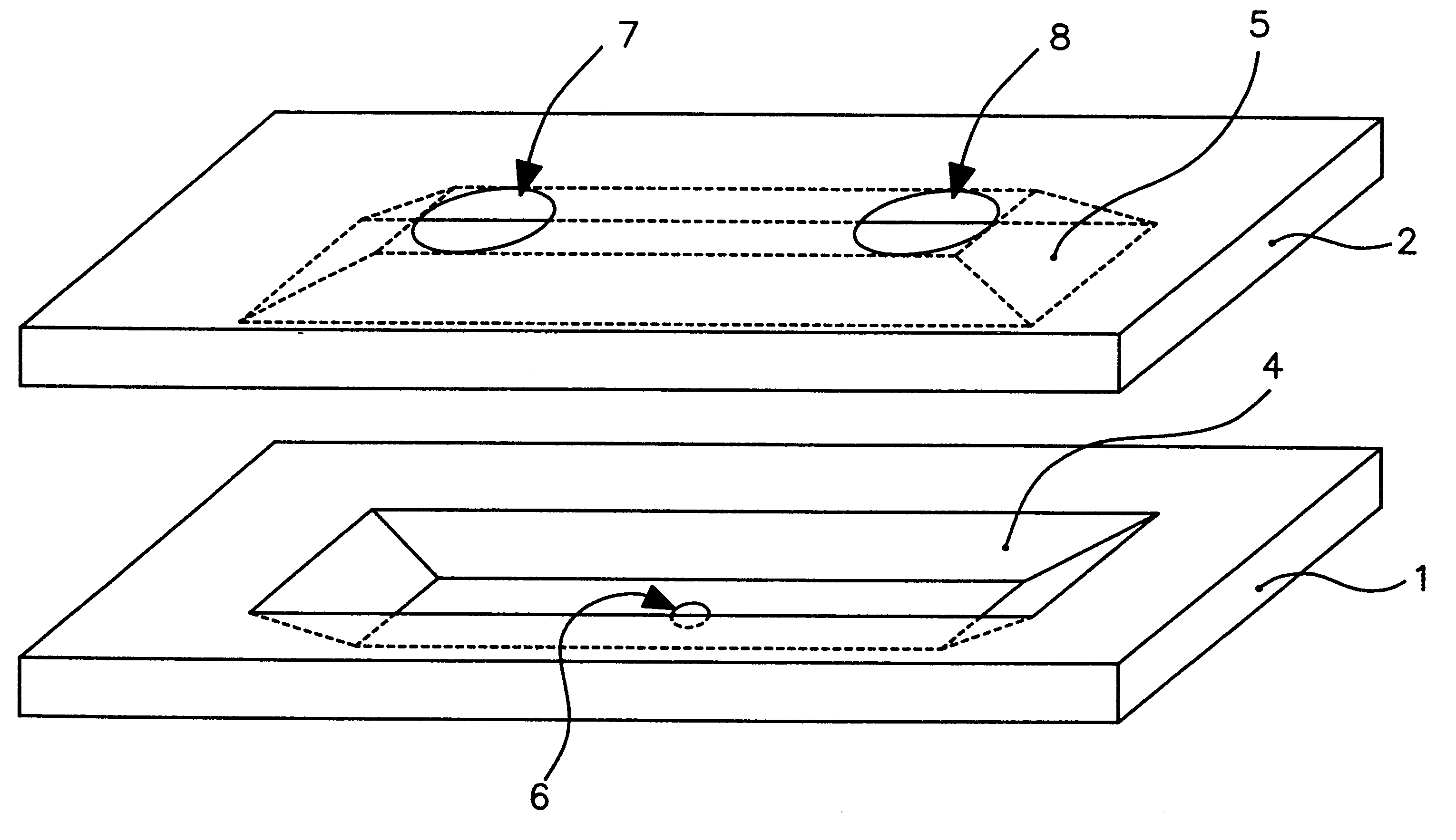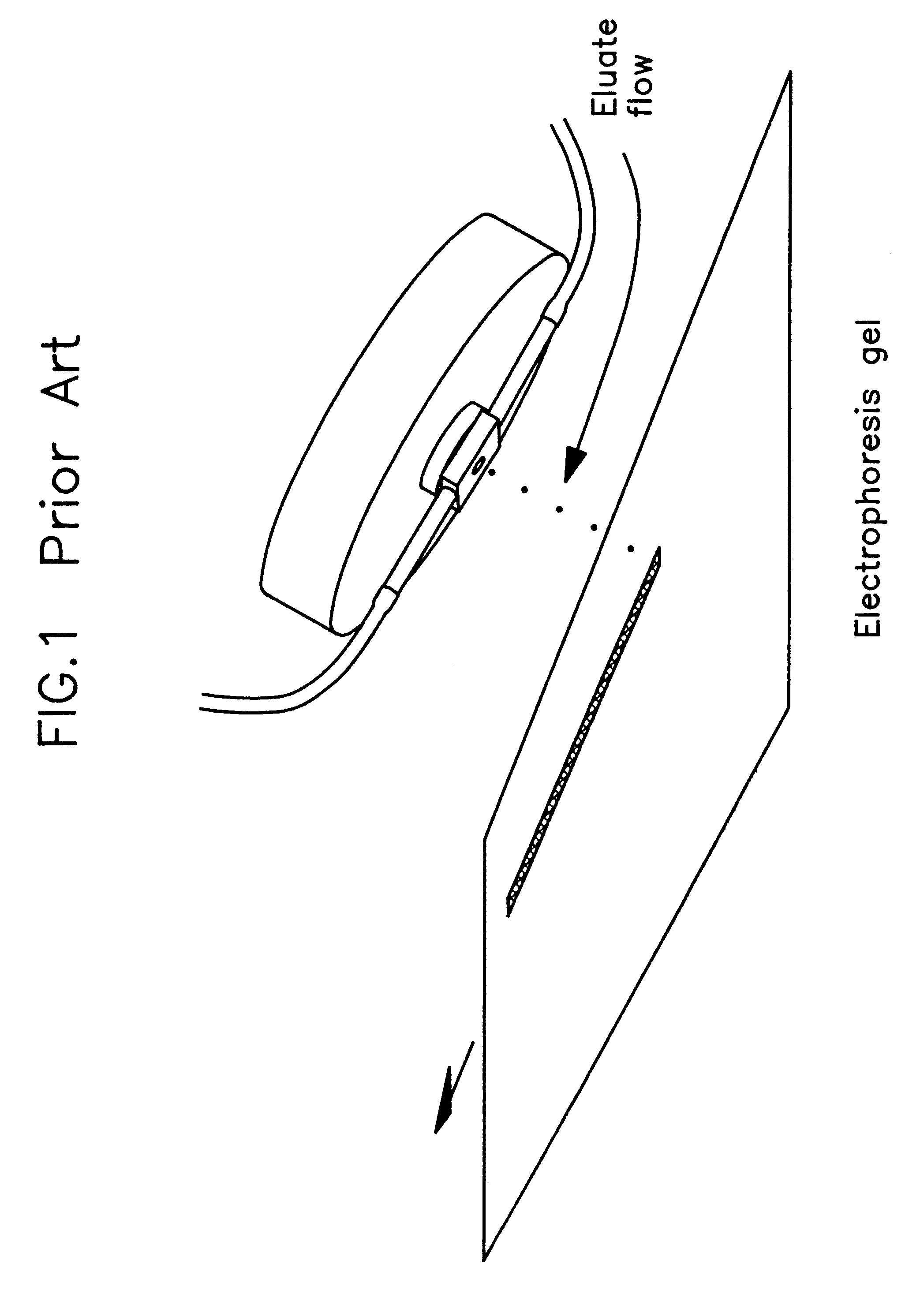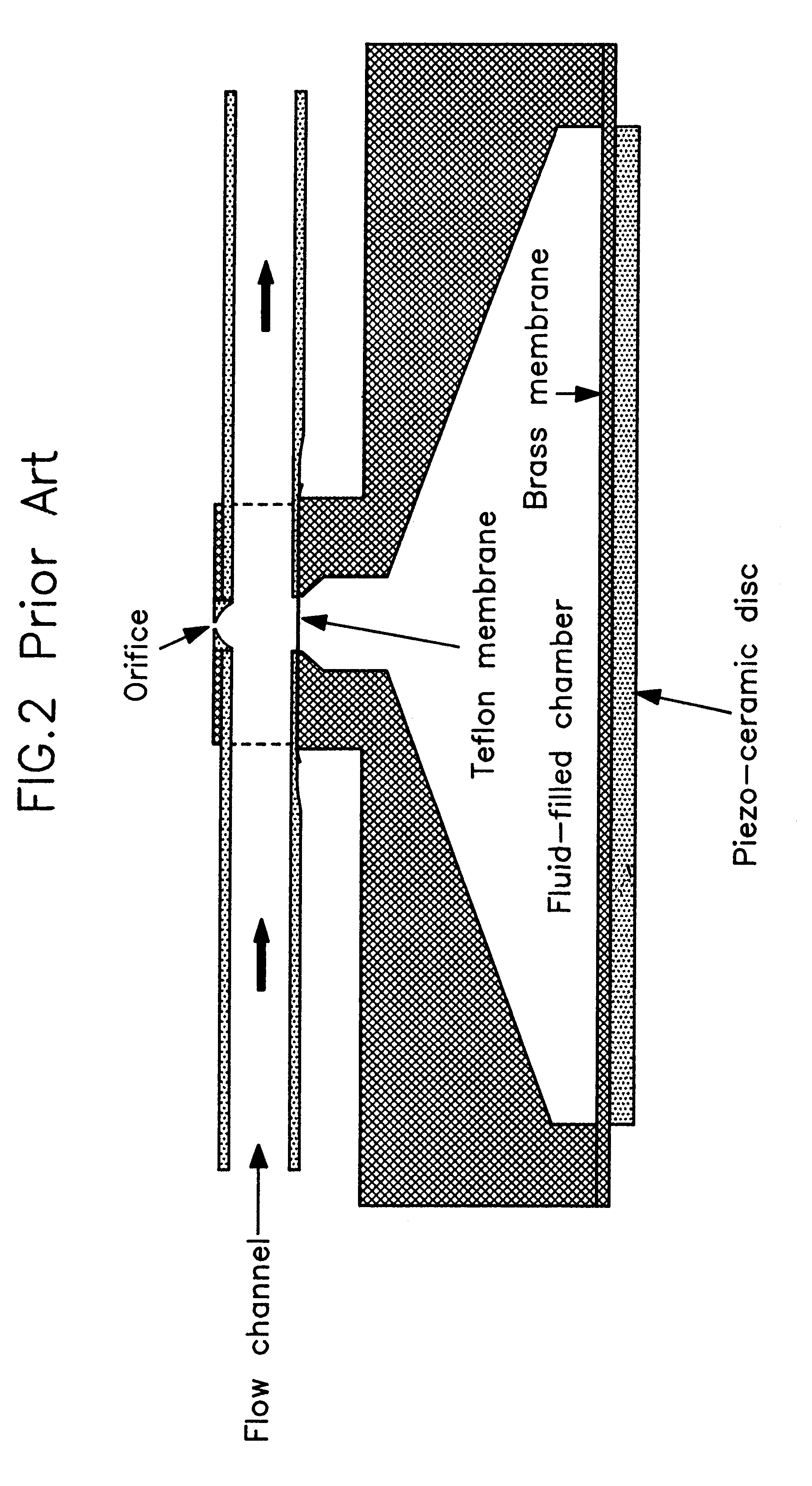Flow-through sampling cell and use thereof
- Summary
- Abstract
- Description
- Claims
- Application Information
AI Technical Summary
Benefits of technology
Problems solved by technology
Method used
Image
Examples
example 2
A sampling cell essentially in accordance with Example 1 was used in the following. A glass capillary for capillary electrophoresis was filled with a solution of sodium chloride (NaCl). Through a first end of the capillary was introduced a thin electrically conducting wire for contacting the solution. The second end of the capillary was placed close to the sampling cell, which was filled with ordinary tap water, and subsequently with a sodium chloride solution which did not alter the below described effects. The drop generation was initiated with a drop emerging frequency of around 50 Hz. A high voltage source was connected to the liquid in the sampling cell and to the wire in the first end of the glass capillary. A voltage of about 2500 V was used. When the voltage was applied the emerging drops were attracted by the second end of the glass capillary. The drops did hit the second end surface of the capillary and the outside of the capillary just below this second end surface. By al...
PUM
 Login to View More
Login to View More Abstract
Description
Claims
Application Information
 Login to View More
Login to View More - R&D
- Intellectual Property
- Life Sciences
- Materials
- Tech Scout
- Unparalleled Data Quality
- Higher Quality Content
- 60% Fewer Hallucinations
Browse by: Latest US Patents, China's latest patents, Technical Efficacy Thesaurus, Application Domain, Technology Topic, Popular Technical Reports.
© 2025 PatSnap. All rights reserved.Legal|Privacy policy|Modern Slavery Act Transparency Statement|Sitemap|About US| Contact US: help@patsnap.com



